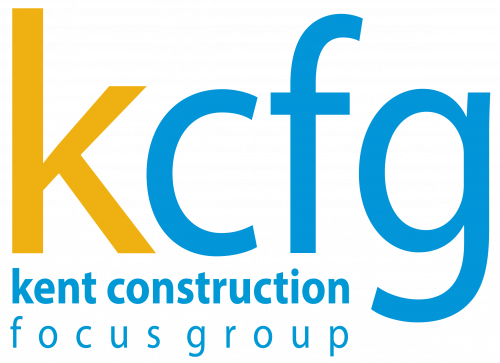Top 10 Benefits Of BIM In Construction
Over the past few years, BIM has been the talk of the town in the AEC (Architectural, Engineering and Construction) industry. Yet, there is a lot of confusion about BIM in construction and how it can help contractors and wider industry. One common misconception is that BIM is merely a technology, or that it only refers to 3D design (though 3D models are indeed at the core of BIM). BIM is actually a process for creating and managing all of the information about a project, leading to an output known as a Building Information Model, which contains geometric 3D model and non graphical information for every aspect of the physical project.
While BIM is mostly associated with design and pre construction, it absolutely benefits every phase of the project life-cycle, even well after building is complete. Building Information Modeling allows projects to be built virtually before they are constructed physically, eliminating many of the inefficiencies and problems that arise during the construction process.
Here are the 10 greatest benefits of BIM in construction:
1. Better Collaboration and Communication
Digital BIM models allow for sharing, collaborating, and versioning that paper drawing sets don’t. With cloud-based tools such as Autodesk’s BIM 360, BIM collaboration can seamlessly occur across all disciplines within the project. The BIM 360 ecosystem allows teams to share project models and coordinate planning, ensuring all design stakeholders have insight into the project.
Cloud access also allows project teams to take the office to the field. With apps such as Autodesk’s BIM 360 tools, teams can review drawings and models onsite and on their mobile devices, ensuring they have access to up-to-date project information at any time.
2. Model-Based Cost Estimation
Many AEC firms are realising that including estimators earlier in the planning stage allows for more effective construction cost estimation,which has led to the growth of model-based cost estimating (also known as 5D BIM). Using BIM tools such as Autodesk’s Revit and BIM 360 Docs automates the time-consuming task of quantifying and applying costs, allowing estimators to focus on higher value factors, such as identifying construction assemblies and factoring risks.
3. Preconstruction Project Visualization
By using BIM, you can plan and visualise the entire project before construction, even before the shovel hits the ground. Space-use simulations and 3D visualizations allow clients to experience what the space will look like offering the ability to make changes before construction start. Having a greater overview from the beginning minimises expensive and time-consuming changes later.
4. Improved Coordination and Clash Detection
BIM allows you to better coordinate Structural, Architectural and M&E aspects, or external clashes before construction begins. Will the electrical conduits clash with a steel beam? Do the doorways have enough clearance? With software such as Autodesk’s BIM 360 Glue you can avoid clashes with automated clash detection.
By avoiding clashes, you reduce the amount of rework needed on any given job. With BIM, you have the opportunity to plan it right before you build onsite. You can avoid last-minute changes and unforeseen issues by enabling easy reviewing and commenting across multiple disciplines.
5. Reduced Cost and Mitigated Risk
One study by McKinsey found that 75% of companies that have adopted BIM reported positive returns and on their investments. But BIM can save you money in a myriad of ways if you take advantage of it. Closer collaboration with contractors can lead to reductions in reworks, and fewer opportunities for claims. Better overview of the project before starting allows for more prefabrication and reduces waste on unused materials. Prefabricated elements can be easily bolted in place rather than created on-site. Labour costs spent on documentation work and miscommunications are reduced. Many companies are using BIM and construction technology to reduce costs and mitigate risk.
With an ever-increasing number of team members using project data, real-time collaboration and a single document repository such as BIM 360 Docs reduces the risk of any company using outdated information. Making sure the right information is available at the right time is essential to completing a successful quality project.
6. Improved Scheduling/Sequencing
In the same way that many of these benefits save money, they save time by reducing the time of project cycles and eliminating reworks. BIM allows design and documentation to be done at the same time, and for documentation to be easily changed to adapt to new information such as site conditions. Schedules can be planned more accurately and communicated exactly, and the improved coordination helps projects be more likely to be completed on-time or early.
7. Increased Productivity and Prefabrication
BIM data can be used to instantly generate production drawings or databases for manufacturing purposes, allowing for increased use of prefabrication and modular construction technology. By designing, detailing and building offsite in a controlled environment, you can diminish waste, increase efficiency, and reduce labour and material costs.
8. Safer Construction Sites
BIM can help improve construction safety by highlighting hazards before they become problems, and avoid physical risks by visualising and planning site logistics ahead of time. Visual risk analysis and safety evaluations can help ensure safety over the course of the project execution.
9. Better Builds
The increased reliability of a coordinated model leads directly to greater building quality. By sharing common BIM tools, more experienced team members work together with contractors through all phases of the project, providing better control over technical decisions around design execution. The optimal ways to construct a project can be tested and chosen early in the project, and structural deficiencies can be identified before building. With the use of visualisations, better design aesthetics can be more easily chosen, such as modeling the flow of natural light into a building. Then, during construction, reality capture technology, can be utilised to improve accuracy.
10. Stronger Facility Management and Building Handover
The information in a model also empowers operation of the building after construction is over, providing ROI well after project completion. Using construction software, an accurate, ongoing digital record of building information is valuable for facilities management and renovators for the entire life cycle of the building. Data can be sent into existing building maintenance software for post-occupancy use. Using a tool such as Autodesk’s BIM 360 Ops, contractors can transform building handover by connecting BIM data generated during design and construction to building operations.
Building Information Modelling has become an invaluable tool with an abundance of benefits for the construction industry. Projects utilising BIM have a greater chance of success and maximise effectiveness for every stage of the project life cycle and beyond.





